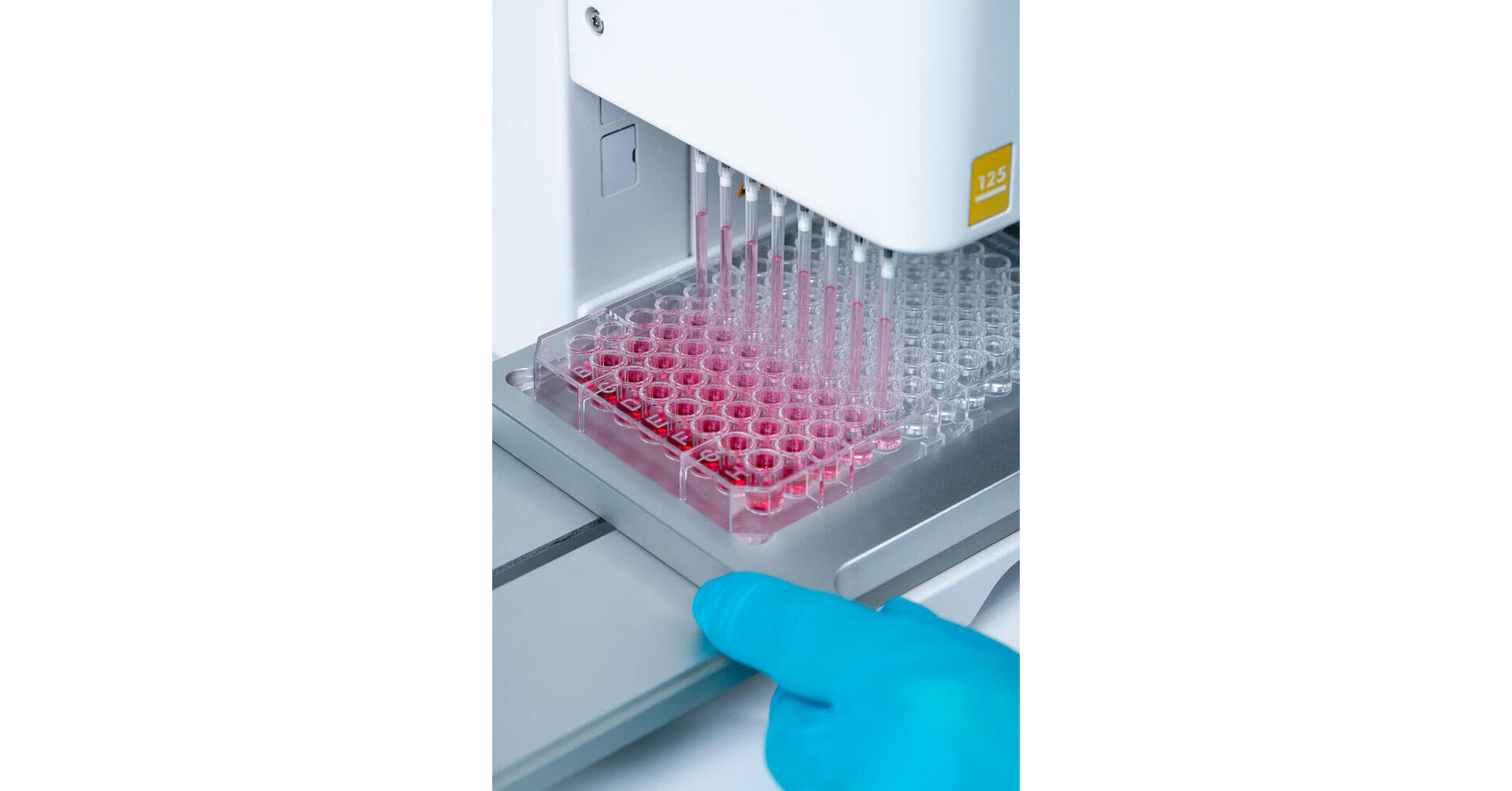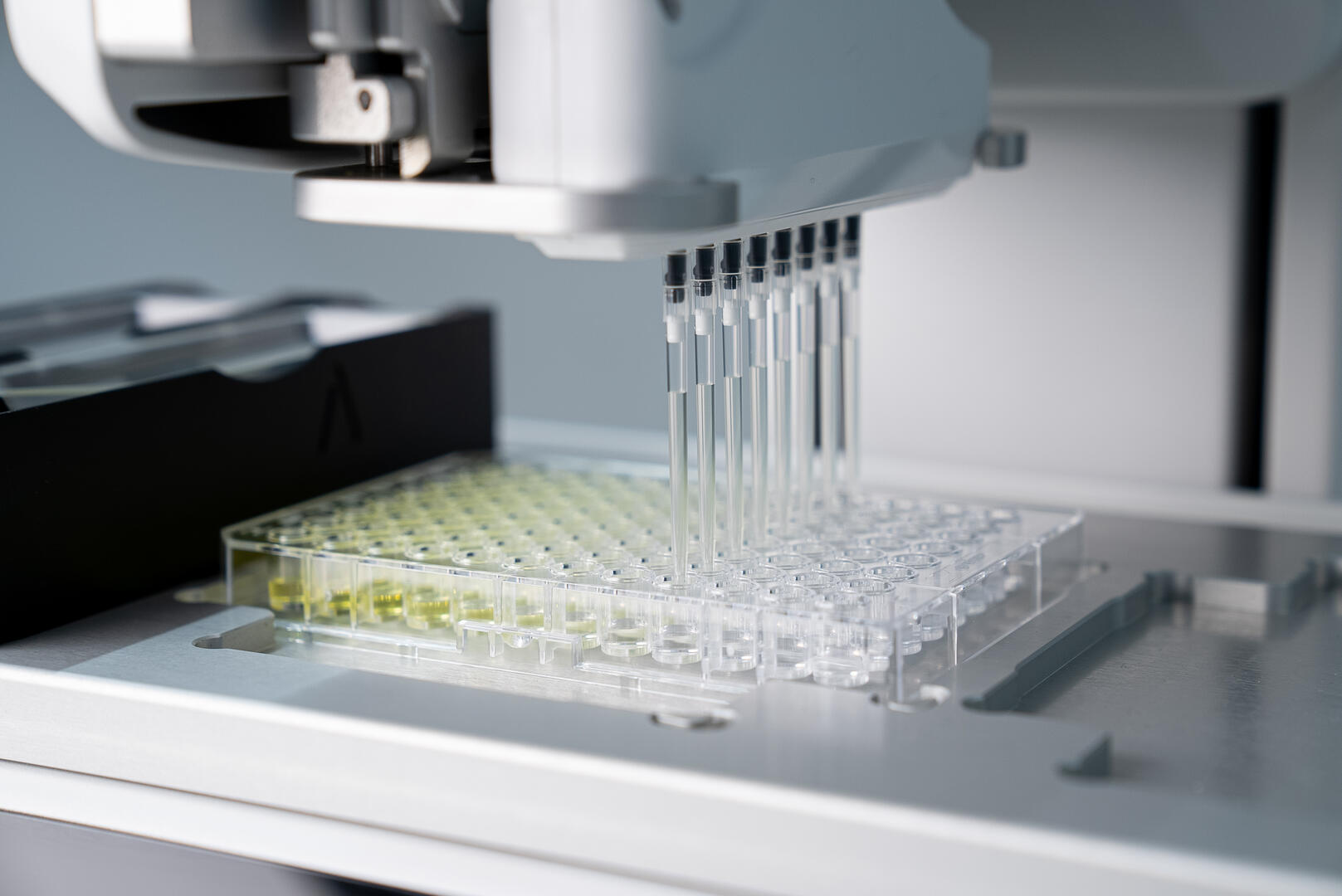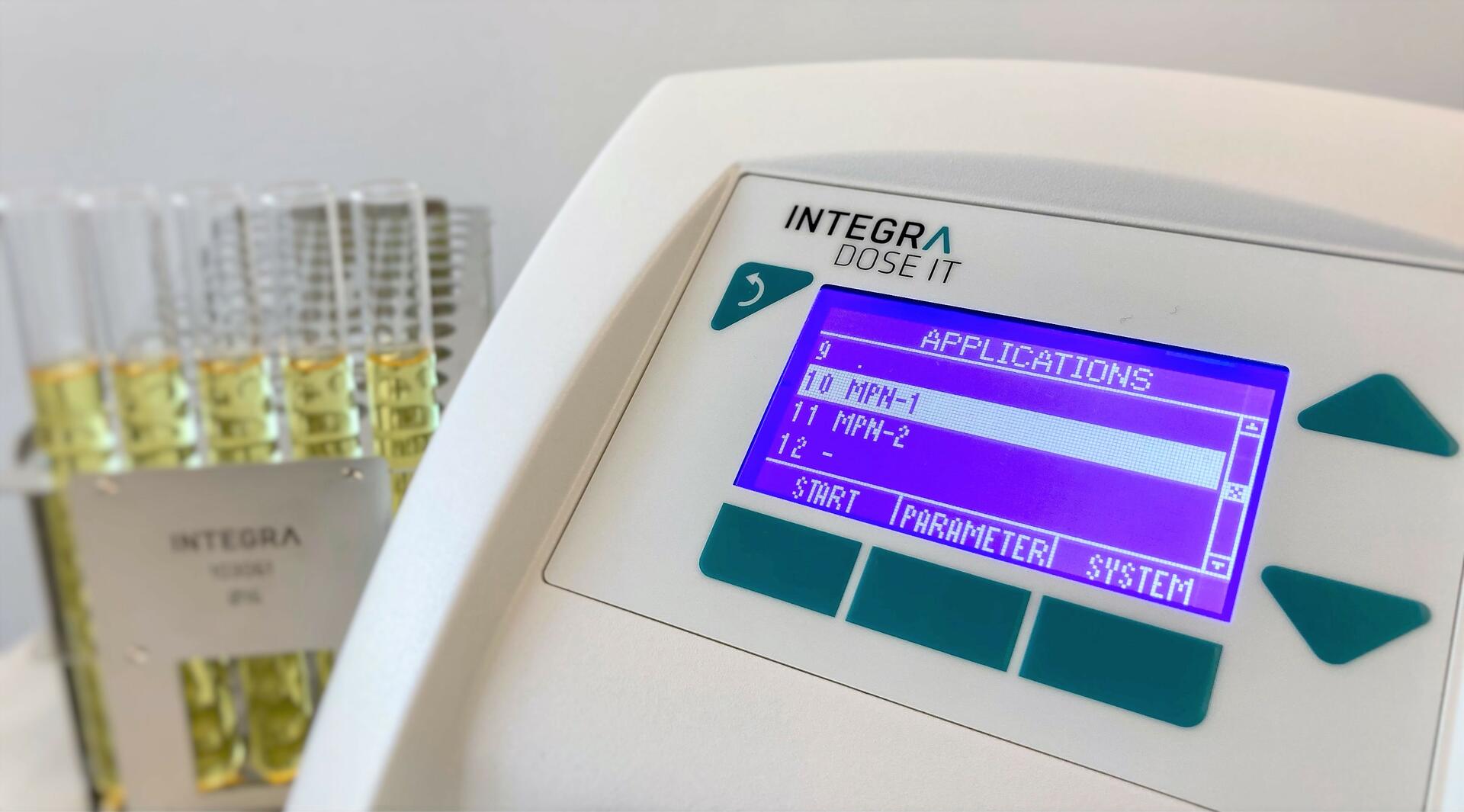Level up the reliability of your serial dilutions in 3 key applications
Precise pipetting for reliable results
Serial dilutions are used to estimate the concentration of a sample, such as DNA, RNA, PCR products, proteins or microorganisms. They are also important for reaching the desired concentration of a reagent, chemical or compound, as in drug discovery in the field of pharmacology. Serial dilutions may appear simple to perform in principle, but the slightest variation in pipetting speed, angle and mixing during manual liquid handling can easily cause errors to accumulate throughout the workflow, negatively affecting the reliability of the end results. Manual pipetting can also be slow, lengthening the time to result, and awkward postures, heavy pipettes, stiff plunger buttons and highly repetitive processes may cause repetitive strain injury in the hand, shoulder, neck and wrist in the long term.
Our pipetting solutions have been shown to increase throughput and enhance the accuracy of the end results across multiple scientific fields. They also reduce the likelihood of RSI by allowing liquid transfer tasks to be performed faster with multiple channels, reducing the length of time users need to hold the pipettes or maintain an uncomfortable sitting or standing position. As well as this, INTEGRA handheld electronic pipettes have all been developed with ergonomics in mind; they are lightweight and feature minimal tip ejection force, and an intuitive thumbwheel design. Automated pipettes eliminate the need to carry out extensive manual liquid transfer steps altogether, reducing physical strain on the hand and wrist. Here, we showcase three key applications where these versatile products can support streamlined and reproducible serial dilution workflows.
For a straightforward step-by-step guide to serial dilutions with real-life examples, good pipetting practices, and guidance focusing on specific liquid handling parameters, please refer to these articles:
Efficient standard curves for precise qPCR validation and nucleic acid quantification
The standard curve – also known as a calibration curve – is a quantitative research and analytical tool used to determine the concentration of unknown samples. A standard curve is prepared from the analyte to be quantified, or a closely related compound, over the range of interest, and the assay is validated by analyzing samples of various known concentrations. The assay is then repeated with unknown samples, using the standard curve to calculate the analyte concentration. For instance, nucleic acid quantification is a common workflow in molecular biology labs and, when quantifying nucleic acids by fluorometry, the fluorescence measurements of the standard curve and unknown samples can be compared to quantify the amount of DNA or RNA present.
Learn more about how to use fluorometry and other RNA and DNA quantification methods to determine the concentration, yield and purity of nucleic acids.
Standard curves are also used to validate qPCR assays when setting up a new protocol or changing workflows. qPCR assays are carried out with a sample containing a known amount of template DNA, and the data is compared to the standard curve to assess the reaction efficiency of the assay.
The reproducibility of a serial dilution is vital to ensure the reliability of results and, with the single channel VIAFLO lightweight electronic pipette and D-ONE single channel pipetting module for the ASSIST PLUS pipetting robot, users can predefine the pipetting speed and mixing parameters to guarantee that every dilution step will be performed under identical conditions regardless of the operator or batch. The pipettes additionally allow dynamic volume adjustment during mixing for ultimate flexibility and process optimization. The multichannel VIAFLO pipettes and VOYAGER adjustable tip spacing pipettes can be used if several standard curves need to be prepared in parallel, and the VOYAGER also enables serial dilutions to be carried out directly between different source and target labware formats, reducing the number of liquid transfer steps and the likelihood of introducing manual errors. Fewer liquid handling steps also mean that serial dilutions can be performed faster, for greater throughput and a shorter time to result.
Fool-proof MIC testing with reproducible serial dilutions
Antimicrobial resistance can develop naturally by random genetic mutations in pathogens, but the mis- and overuse of drugs – especially antibiotics in healthcare and agriculture – accelerate this process significantly. This means that the options for treating many common infections are rapidly decreasing, making it vital to perform antimicrobial susceptibility testing in order to prescribe the most effective treatment right from the start. This kind of testing is also key to determining the efficacy of a new antimicrobial compound during drug development.
One way to measure the antimicrobial susceptibility of a pathogen is to determine the lowest concentration of an antimicrobial drug that inhibits its growth, known as the minimum inhibitory concentration (MIC). This can be performed via broth dilution, agar dilution or antimicrobial gradient methods. A comprehensive review of the most commonly used methods for determining the MIC can be found here.
The partial tip loading of the VIAFLO 96 and VIAFLO 384 handheld electronic pipettes and the MINI 96 portable electronic pipette allows operators to set predefined pipetting heights and angles. These features eliminate any manual influences and enhance the uniformity of the liquid handling steps during MIC testing. The VIAFLO 96 and VIAFLO 384 pipettes also enable labs to perform high throughput serial dilutions for greater productivity.

Highly reproducible, walk-away pipetting of more complex workflows can be achieved with automated liquid handling solutions like the ASSIST PLUS pipetting robot. This platform streamlines serial dilution steps to speed up throughput, and frees staff to perform other vital tasks in the lab, leading to higher lab productivity. On top of this, the pipetting robot ensures the safety of staff by preventing exposure to hazardous organisms and antibiotics during liquid transfer, and eliminating RSI caused by repetitive manual pipetting.
Our app note explains proven automated serial dilution protocols for the ASSIST PLUS pipetting robot, providing a valuable resource for lab personnel seeking to streamline their workflows with tried and tested liquid handling methods. Find out how to increase the speed and precision of MIC testing workflows by automating the pipetting steps of 2-fold, 5-fold and 10-fold serial dilutions on the ASSIST PLUS.

Effortless serial dilutions for bacterial enumeration
Serial dilutions are routinely used in the field of microbiology to estimate the number of bacterial cells contained in a sample. It is, of course, impossible to count the individual bacteria when they are present in high concentrations, and so the cell growth pattern of the sample is estimated by plating and incubating the different dilution steps of a 10-fold serial dilution.
On the other hand, when bacterial concentrations in a sample are very low, they will not provide reliable viable cell numbers by classical plate counting. In this situation, the most probable number (MPN) method should be used for bacterial enumeration instead. Replicates of liquid broth are dispensed into culture tubes and inoculated with different amounts of the sample, and bacterial growth is indicated by a color change, with the tube becoming cloudy or producing gas during incubation. The number of viable cells in the sample is then estimated based on statistical probabilities.
The DOSE IT laboratory peristaltic pump allows fast and accurate dispensing of broth and samples into culture tubes, greatly speeding up the pipetting steps of MPN procedures. It also offers hands-free control using the optional benchtop or foot switches, and remote operation via PC software, providing users with the additional flexibility they need to adapt liquid handling stages to their particular MPN workflow. The DOSE IT’s CUSTOMIZE mode enables the easy creation of personalized liquid handling protocols based on configurable parameters such as volume, flow rate and repetitions, guaranteeing reproducible pipetting between samples. The pump is additionally compatible with different sized tubing ranging from 1 to 8 mm for different throughput levels, making it useful for the accurate dispensing of a broad selection of sample volumes during MPN analysis.
Learn more about how DOSE IT can help to perform rapid and precise dilutions for bacterial enumeration when working with low concentration samples.

Versatile solutions that meet the need
Serial dilution is a widely used technique across many life science disciplines, and performing it correctly underpins the success of later studies. Our liquid handling solutions standardize pipetting protocols and minimize the human error often introduced through manual pipetting, enhancing result accuracy and reproducibility. Moreover, these innovative and robust products can substantially speed up the pipetting stages of serial dilutions, allowing labs to process more samples and achieve a shorter time to result. As an added benefit, workflow automation and hands-free operation also prevent lab staff from being exposed to hazardous sample material, and from performing strenuous pipetting tasks that could lead to RSI in the long term, an important consideration for lab managers. Our highly flexible instruments can be easily adapted to numerous different applications to simplify a range of liquid handling workflows and enhance lab productivity.
References
https://www.sciencedirect.com/science/article/pii/S2214753515000169
https://bitesizebio.com/31470/obligate-qpcr-standard-curve/
https://www.jove.com/v/10507/serial-dilutions-and-plating-microbial-enumeration
https://onlinelibrary.wiley.com/doi/full/10.1046/j.1469-0691.2003.00790.x























